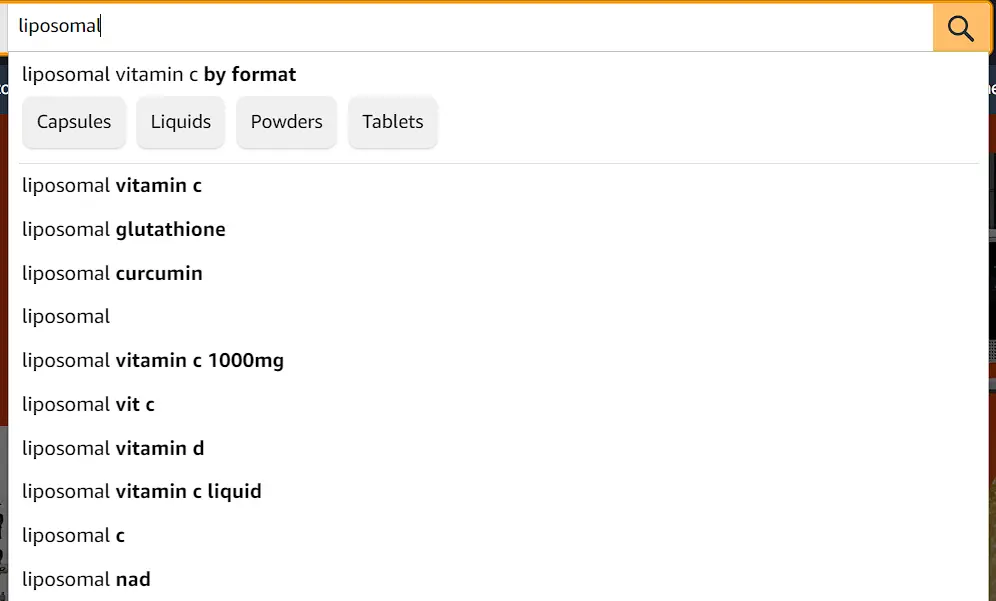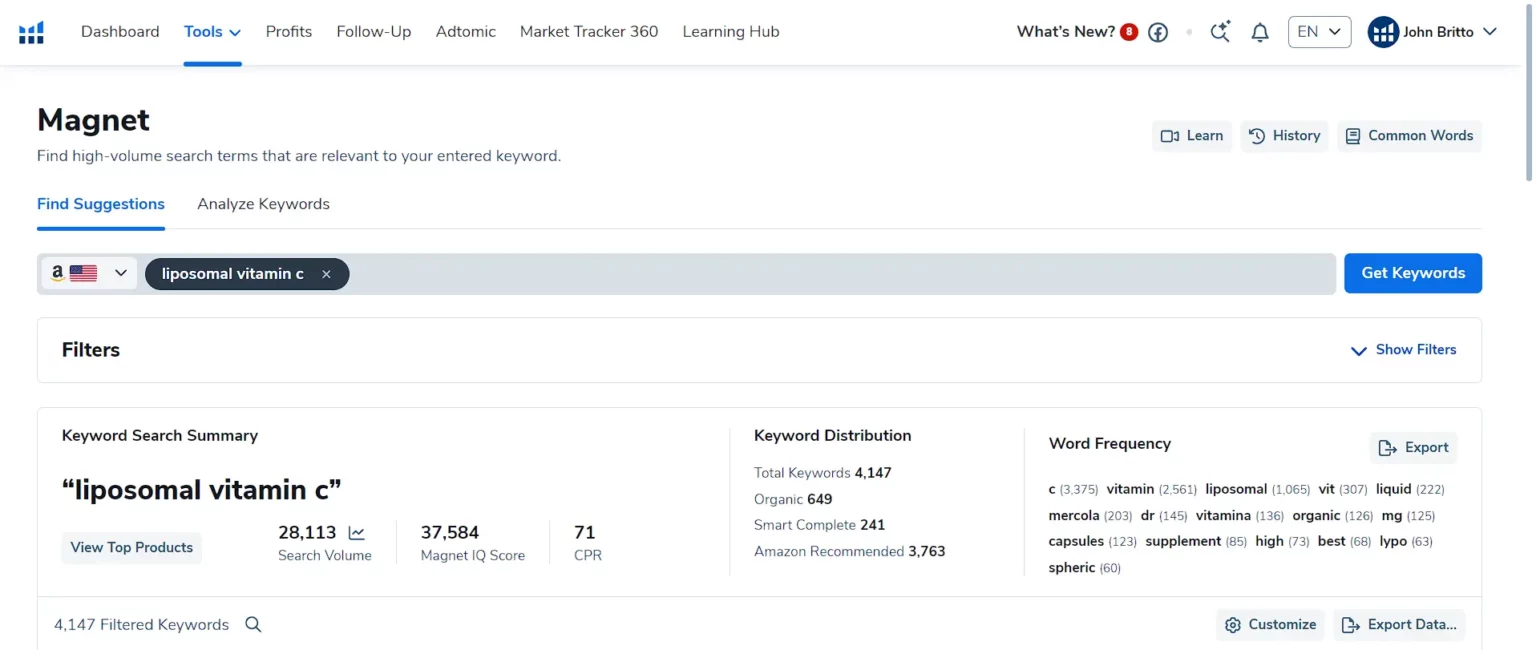In the world of Amazon product listings, optimizing your product’s visibility often hinges on selecting the correct backend search terms. These concealed keywords, known as search terms, carry substantial weight in determining how easily potential customers can find your product. In this comprehensive guide, we will delve into the best practices for picking out the most effective backend search terms for your Amazon listings.
Before doing a keyword research for the best search terms, let’s learn what they are and how they differ from frontend keywords.

Frontend keywords on Amazon are the keywords that you include in various visible sections of your product listing to improve its discoverability and relevance in Amazon’s search results. These frontend keywords are placed in specific fields when you create or edit a product listing on Amazon. These keywords are essential in improving your products’ ranking and indexing your custom keyword phrases on Amazon. Now that we know what role frontend keywords play on Amazon let’s learn how search terms can make or break your Amazon listings.
The Importance of Backend Search Terms on Amazon

Amazon Backend Keywords are hidden keywords visible only to Amazon’s search engine. Customers do not see them, but Amazon uses them to determine the relevance of a product to a particular search query. Backend keywords can be used to target a broader range of keywords than would be possible in the product title, bullet points, and description. It’s crucial to adhere to best practices when selecting these keywords to maximize your product’s visibility and reach your target audience. Keep reading to learn how to harvest the correct backend search terms for your Amazon products.
Harvesting Relevant and High Search Volume Search Terms
The effectiveness of Amazon search terms hinges on their unwavering relevance to your product, making relevance the cornerstone of your keyword strategy. These keywords should encompass many factors, including seasonal fluctuations, emerging trends, the resonance of your brand name, trademark recognition, and insights derived from Amazon’s Search Query Performance Reports. Furthermore, the dynamic nature of e-commerce requires continuous monitoring and adaptation.
Incorporating Amazon’s indexed and auto-complete keywords, recognizing the ebb and flow of seasonal and occasions-related keywords, and strategically targeting high search volume keywords ensures that your product remains optimally positioned to meet online shoppers’ ever-evolving demands and interests. In this ever-competitive marketplace, precision in selecting and leveraging these keywords is the key to unlocking the full potential of your Amazon listings.
Here are some of the key sources to take advantage of while harvesting Amazon search terms:
- Brainstorm and Research
- Use Amazon’s Autocomplete

- Amazon Keyword Tools

- Amazon Search Query Performance Report

- Competitor Research

- Customer Feedback
- Seasonal Keywords
- A/B Tests
Once you have a list of your product’s most relevant and high search volume keywords, all that is left is picking the best keywords to fill the 250-byte search terms field on Amazon.
Tips to Select Optimal Backend Search Terms (Dos and Don'ts)
Here are some quick tips to get you started with selecting the best search terms for your products.
- Omit Product Identifiers
One typical mistake sellers make is including product identifiers such as brand names, ASINs, UPCs, and other similar details in their backend search terms. These identifiers are superfluous since Amazon already employs them for product identification. Incorporating them in your backend search terms is redundant and won’t enhance your product’s placement in search results.
- Furnish Precise and Pertinent Information
Misleading or irrelevant information in your backend search terms can negatively affect your product’s ranking. Ensure that your information aligns with your product’s category and characteristics. Including incorrect product categories, gender specifications, or unrelated terms can perplex Amazon’s search algorithm and diminish visibility.
- Steer Clear of Repetition
Your backend search terms should avoid replicating information already present in other fields, such as the product title, description, bullet points, or brand. Amazon’s algorithm regards redundant data as unhelpful and won’t bolster your product’s standing in search results.
- Arrangement of Keywords for Logic
When inputting multiple words in your search terms, arrange them logically. Consider how a potential customer is likely to search for your product. For instance, “big stuffed teddy bears” is more likely to be searched than “teddy stuffed bears.” The order of words can significantly impact your product’s discoverability.
- Use Single Spaces to Separate Keywords
Amazon’s search engine doesn’t necessitate commas, semicolons, or carets to separate keywords in your backend search terms. Simply use a single space between each keyword and avoid superfluous special characters.
- Avoid Temporary Information
Statements like “new” or “on-sale” should be excluded from your backend search terms. These terms are only temporarily valid and do not contribute to your product’s long-term search visibility. Focus instead on timeless keywords that accurately depict your product.
- Consistency in Spacing, Punctuation, and Capitalization
Maintain uniformity in spacing, punctuation, and capitalization within your backend search terms. Amazon’s search algorithm automatically accounts for different case forms, word forms, and spelling variants when processing searches. Upholding consistent formatting will help avert potential issues with search matching.
- Incorporate Abbreviations, Alternate Names, and Key Attributes
To broaden the reach of your product, consider including pertinent abbreviations, alternate names, and key characteristics. These inclusions can aid potential customers in finding your product, even if they use different terms or synonyms.
- Plurals Are Redundant
There is no need to include plural forms of keywords in your backend search terms. Amazon’s search algorithm factors in pluralization when customers search for products. Concentrate on using singular forms of keywords to keep your search terms concise.
- Prioritize Relevance Over Search Volume

Although high search volume keywords might seem appealing, it is crucial to prioritize relevance. Select keywords that faithfully describe your product that potential customers will likely employ in their searches when looking for a product like yours. Relevance is the key to enhancing your product’s visibility.
How to Add Search Terms on Amazon?
- Go to Seller Central and log in to your account

- Go to Inventory: From your Seller Central dashboard, navigate to the “Inventory” tab.

- Manage Inventory: Click “Manage Inventory” to view your product listings.
- Select a Product: Choose the product you want to add or edit search terms.
- Edit: Click the “Edit” button on your selected product. This will allow you to modify the product listing.

- Add Search Terms: In the product listing editor, you’ll find a section for “Keywords” or “Search Terms” (the exact wording may vary based on your Amazon marketplace). This is where you can add your search terms. Each Amazon marketplace may have different character limits for these fields, so ensure your keywords fit within the specified limits.
Conclusion
Selecting the best backend search terms for your Amazon listing is a strategic one that can profoundly impact your product’s success on the platform. By adhering to these best practices, avoiding restricted keywords and focusing on relevance over search volume, you can enhance your product’s discoverability, attract more potential customers, and ultimately boost your sales on Amazon. Remember that Amazon’s search algorithm is designed to connect customers with the products they seek, so ensure your backend search terms accurately represent your offering.
FAQs
- How can I use negative keywords in my Amazon backend search terms?
- How can I use competitor research to identify practical backend search terms?
- How can I use Amazon’s search terms report to improve my backend search terms?
- How can I use keyword match types to improve the effectiveness of my backend search terms?
Amazon’s backend search terms don’t support match types like those in PPC campaigns. Instead, focus on including various relevant keywords in your backend search terms. This will help your products appear in a broader range of search queries.
- How can I use A/B testing to optimize my backend search terms?
A/B testing for backend search terms involves making minor changes to your listings and measuring their impact on sales and visibility. For example, you can experiment with different keywords or their placement in the backend search terms. Over time, evaluate the results to refine your strategy.
- How can I use long-tail keywords in my Amazon backend search terms?
Long-tail, more specific, and less competitive keywords can help you target niche markets. Include relevant long-tail keywords in your backend search terms, mainly if they describe unique features or use cases for your products.
- How can I use seasonal keywords in my Amazon backend search terms?
Seasonal keywords are essential for products with strong seasonal demand, such as holiday-related items. Update your backend search terms to include seasonal keywords during relevant periods, and remove them when they’re no longer relevant.
- How can I use geotargeting in my Amazon backend search terms?
While Amazon allows you to specify where your products ship to, backend search terms are not typically used for geotargeting. Instead, use location-based keywords in your product titles, descriptions, or bullet points to appeal to regional customers.
- How can I use Amazon’s Sponsored Products program to improve the effectiveness of my backend search terms?
Amazon’s Sponsored Products program allows you to bid on keywords and promote your products. By identifying high-performing keywords from your Sponsored Products campaigns, you can incorporate them into your backend search terms to enhance organic search visibility.




